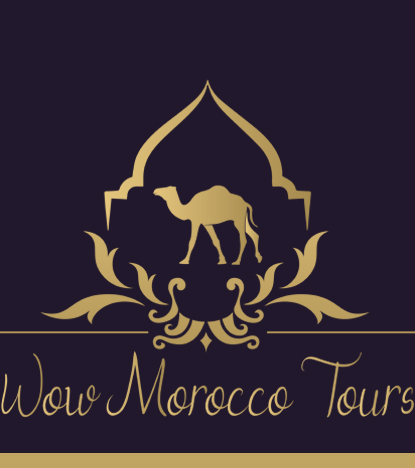
Moroccan Architecture: From Ancient Medinas to Modern Masterpieces
Introduction
Morocco is a land where every building tells a story. From the sun-baked walls of centuries-old kasbahs to the sleek glass lines of contemporary skyscrapers, Moroccan architecture offers a stunning visual journey through time. It reflects the nation’s diverse heritage, a blend of Arab, Berber (Amazigh), Andalusian, and European influences and expresses the unique identity of each region and era.
Whether you’re wandering through the winding alleys of a medieval medina, marveling at the intricate tilework of a mosque, or stepping into a stylish riad in Marrakech, Moroccan architecture is both a sensory and cultural experience. It’s not just about the structures themselves, it’s about how they’re designed to connect with nature, support community life, and inspire spiritual reflection.
In this article, we’ll explore the many layers of Moroccan architecture, from ancient cities and rural villages to modern masterpieces that are redefining the skylines. Each section will reveal how Morocco’s buildings reflect its history, values, and ongoing dialogue between tradition and innovation.
Elements of Traditional Moroccan Architecture
Traditional Moroccan architecture is instantly recognizable for its harmonious blend of form, function, and artistry. Influenced by Islamic aesthetics, indigenous Berber design, and Andalusian elegance, it prioritizes both visual beauty and practical living. The structures are designed to suit the climate, support community living, and reflect spiritual and cultural ideals.
1. Design Principles
At the heart of Moroccan architecture is the principle of inward-looking design. Homes and palaces are often built around central courtyards, offering privacy from the outside world while creating a tranquil space within. These courtyards often include fountains and gardens symbolic of paradise in Islamic tradition.
Symmetry and geometric harmony are essential. Instead of portraying people or animals (which is traditionally avoided in Islamic art), Moroccan design uses repeated patterns and calligraphy to achieve visual rhythm and depth. Walls, ceilings, and even floors are intricately decorated, but always with purpose and balance.

2. Materials and Craftsmanship
Moroccan architecture showcases masterful craftsmanship using natural and locally sourced materials. Key elements include:
- Zellige (mosaic tilework): Small, hand-cut pieces of colorful tile arranged in geometric patterns, often covering walls, fountains, and floors.
- Tadelakt: A polished, waterproof plaster made from lime and natural pigments. Commonly used for hammams, riads, and walls in traditional homes.
- Carved Cedarwood: Used in doors, ceilings, and furniture often intricately hand-carved with floral and geometric motifs.
- Stucco Reliefs: White plaster molded into intricate arabesques and calligraphy, especially seen in mosques and madrasas.
These materials not only enhance aesthetic appeal but also help regulate interior temperature, making homes cooler in summer and warmer in winter.

3. Iconic Features
Several key elements define traditional Moroccan buildings:
- Riads: Traditional homes or palaces with an interior garden or courtyard, often hidden behind plain exterior walls.
- Arches and Domes: Often horseshoe-shaped or pointed, adding elegance and structural integrity.
- Ornate Doors and Gateways: Heavily decorated with brass studs, carvings, and symbolic designs a prominent feature in medinas and kasbahs.
- Fountains: Central to courtyards and public squares, representing purity and tranquility.
- Mashrabiya (lattice screens): Wooden or plaster screens that allow airflow and light while maintaining privacy.
These architectural elements are not just decorative they reflect social values such as modesty, hospitality, and a deep connection to nature and spirituality.

Fascinated by Morocco’s Unique Architectural Beauty?
From the intricate tilework of centuries-old medinas to the sleek lines of contemporary design, Moroccan architecture is a journey through time, tradition, and innovation. Whether you’re an architecture enthusiast, a history lover, or simply someone inspired by cultural beauty, Morocco offers a visual experience unlike any other.
Ready to explore the walls that tell stories?
Historic Urban Architecture: The Medinas
The medinas or old walled cities of Morocco are living museums of architectural heritage. These densely packed urban centers date back to the 9th and 10th centuries and were designed for both community living and defense. Characterized by narrow, labyrinthine streets, towering walls, and bustling souks, each medina is a reflection of the era and region in which it was built.
Walking through a medina is a sensory experience the scent of spices, the sounds of craftsmen at work, the shade of high walls, and the sight of ornate wooden doors or hidden courtyards. Despite their age, many medinas remain vibrant, functioning city centers where tradition and daily life intersect.
1. Fes el-Bali
-
UNESCO World Heritage Site
Fes el-Bali is the oldest and most complete medieval Islamic city in the world. Founded in the 9th century, it’s a marvel of urban planning, with more than 9,000 alleys and no cars allowed inside. Its architecture includes:
- Al-Qarawiyyin University and Mosque – one of the oldest in the world, with classic arches, green-tiled roofs, and serene courtyards.
- Bou Inania Madrasa – a masterpiece of Marinid architecture, with zellige-covered walls, carved cedar ceilings, and a grand courtyard.
- Traditional homes (dars) – often with hidden riads and rooftop terraces offering panoramic views.
Fes is the heart of Moroccan craftsmanship, and its buildings are living examples of the artistry preserved for over a millennium.
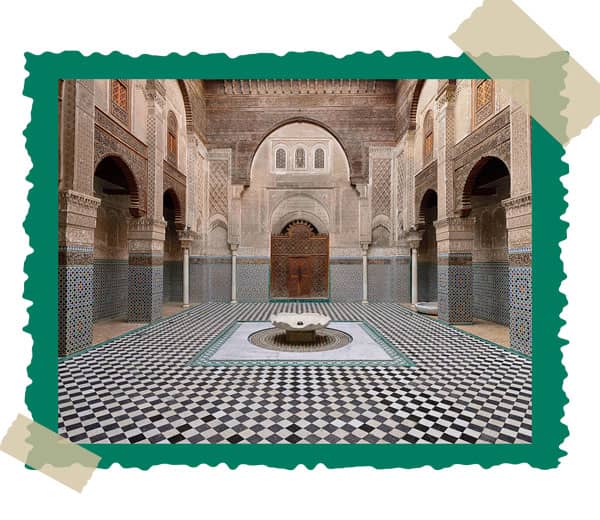
2. Marrakech Medina
-
Marrakech’s medina is one of the most visited and iconic. Founded in the 11th century by the Almoravids, it blends Amazigh, Arab, and Andalusian elements into a striking visual palette of red clay, vibrant tiles, and lush riads.
Key architectural highlights include:
- The Koutoubia Mosque – known for its impressive minaret that inspired others throughout the western Islamic world.
- El Badi Palace – now in ruins, but once a lavish Saadian-era palace with sunken gardens and towering walls.
- Ben Youssef Madrasa – a student dormitory turned museum, showcasing exceptional stucco and tile artistry.
The city’s architecture is an embodiment of Marrakech’s nickname: “The Red City,” defined by its distinctive red-ochre buildings and fortress-like walls.
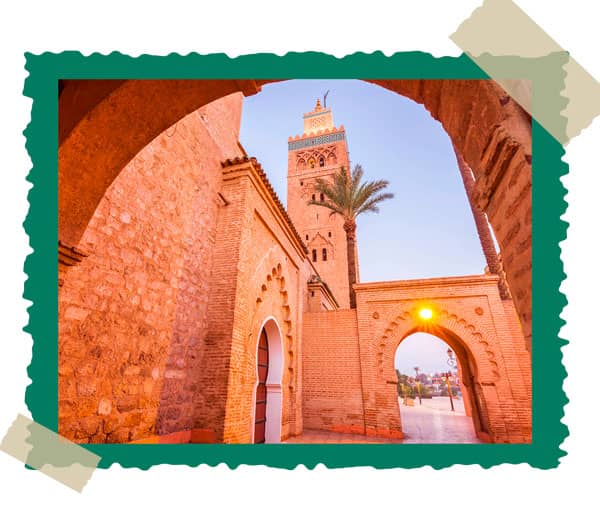
3. Chefchaouen
-
Located in the Rif Mountains, Chefchaouen is famous for its blue-washed medina, a color tradition believed to ward off mosquitoes or reflect the sky and heaven. The architecture is Andalusian in style, with white walls, tiled roofs, and open courtyards.
Highlights include:
- Simple, elegant homes painted in shades of blue
- Quiet, arched passageways perfect for photography
- Small, tiled mosques and artisan shops tucked along winding alleys
Though smaller than Fes or Marrakech, Chefchaouen’s charm lies in its peaceful atmosphere and aesthetic harmony.
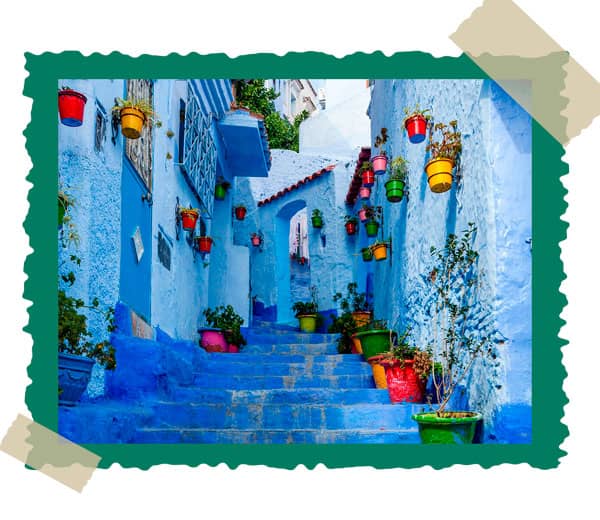
4. Essaouira
-
Essaouira’s medina, built in the 18th century by European architects under Sultan Mohammed ben Abdallah, has a unique blend of Moroccan and European styles. This coastal town reflects maritime architecture with whitewashed buildings, blue shutters, and grid-like street patterns unusual for Moroccan cities.
Key architectural traits include:
- Ramparts and Skala de la Ville – fortified sea walls with cannons and stone towers
- Straight streets influenced by French urban design
- Artisan homes and workshops that mix simplicity with charm
Essaouira’s architecture feels more open and breathable, perfect for a laid-back coastal lifestyle.
Each of these medinas offers its own version of Moroccan identity, shaped by geography, history, and local artistry. Together, they showcase the richness and variety of Morocco’s historic urban design.
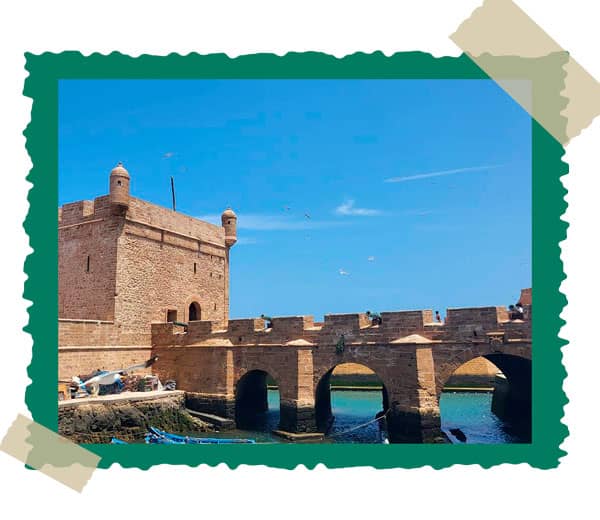
Fascinated by Morocco’s Unique Architectural Beauty?
From the intricate tilework of centuries-old medinas to the sleek lines of contemporary design, Moroccan architecture is a journey through time, tradition, and innovation. Whether you’re an architecture enthusiast, a history lover, or simply someone inspired by cultural beauty, Morocco offers a visual experience unlike any other.
Ready to explore the walls that tell stories?
Religious and Royal Architecture
Morocco’s religious and royal structures are among its most breathtaking architectural achievements. These buildings serve not only as places of worship or residence but also as symbols of power, spirituality, and artistic sophistication. They reflect Islamic design principles while showcasing Morocco’s own flair for detail and grandeur.
1. Mosques
Mosques are central to Moroccan life, and their architecture is deeply symbolic. Moroccan mosques typically feature:
-
- Minarets – square-shaped towers used to call the faithful to prayer
- Courtyards with fountains – for ritual purification (wudu)
- Prayer halls – often with horseshoe arches, ornate mihrabs (prayer niches), and carved wood ceilings
Koutoubia Mosque (Marrakech)
This 12th-century mosque is a landmark of Almohad architecture. Its 77-meter-high minaret, adorned with decorative arches and ceramic inlays, served as a model for other minarets across the Islamic world, including the Giralda in Seville.
Hassan II Mosque (Casablanca)
One of the largest mosques in the world, it combines modern engineering with traditional Moroccan aesthetics. Built partly over the Atlantic Ocean, it features a 210-meter-high minaret (the tallest in the world), a retractable roof, and intricate tile and stonework crafted by thousands of artisans.
Al-Qarawiyyin Mosque and University (Fes)
Founded in 859 CE, it’s considered by UNESCO to be the world’s oldest existing university. Its vast courtyard, exquisite mosaics, and woodwork highlight centuries of intellectual and religious tradition.
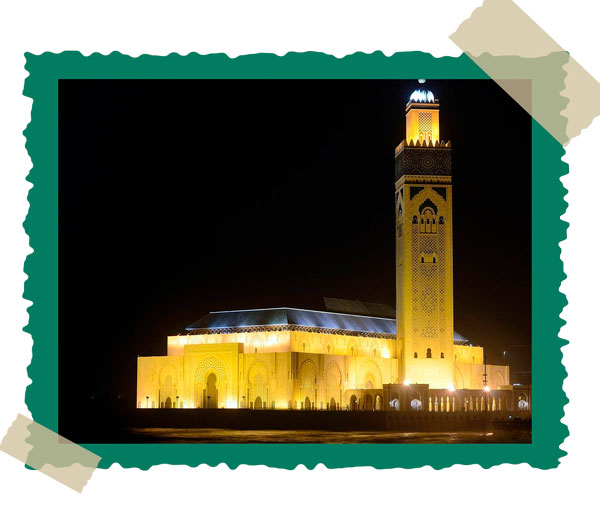
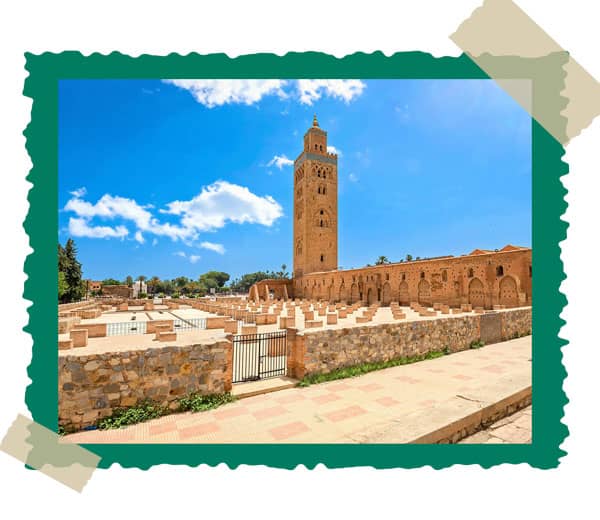
2. Mausoleums and Madrasas
These structures combine spiritual function with artistic expression, often decorated with elaborate carvings and peaceful courtyards.
Saadian Tombs (Marrakech)
Rediscovered in 1917, these tombs house members of the Saadian dynasty and are celebrated for their delicate stucco, marble pillars, and intricate zellige.
Moulay Ismail Mausoleum (Meknes)
One of the few religious sites in Morocco open to non-Muslims, this mausoleum is richly adorned with golden calligraphy, sculpted plaster, and symmetrical architecture symbolizing eternal peace.
Ben Youssef and Bou Inania Madrasas
These Islamic schools of learning are masterpieces of architectural harmony with zellige walls, cedarwood doors, and tranquil courtyards for contemplation and study.
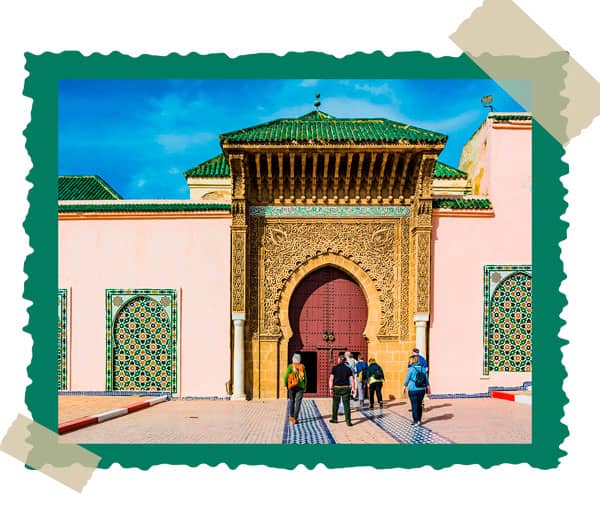
3. Royal Palaces and Kasbahs
Royal and defensive architecture in Morocco often combines grandeur with practicality.
Royal Palace of Fes
While not open to the public, the massive brass doors and mosaic façades of the palace gates are a popular photo spot. The palace complex spans multiple acres and includes private mosques and gardens.
El Badi Palace (Marrakech)
Once described as a “jewel of Islamic architecture,” this ruined palace built by Sultan Ahmed al-Mansour was famed for its use of Italian marble, gold, and ivory. Today, it offers a hauntingly beautiful look at Morocco’s imperial past.
Kasbah of the Udayas (Rabat)
This 12th-century kasbah is a fortress neighborhood perched above the Bou Regreg river. Inside, winding alleys lead to whitewashed homes, Andalusian gardens, and panoramic ocean views.
These religious and royal structures are more than just monuments they’re living expressions of Morocco’s devotion, craftsmanship, and regal legacy. Each tells a story of dynasties, spiritual devotion, and architectural excellence that continues to influence Moroccan design to this day.

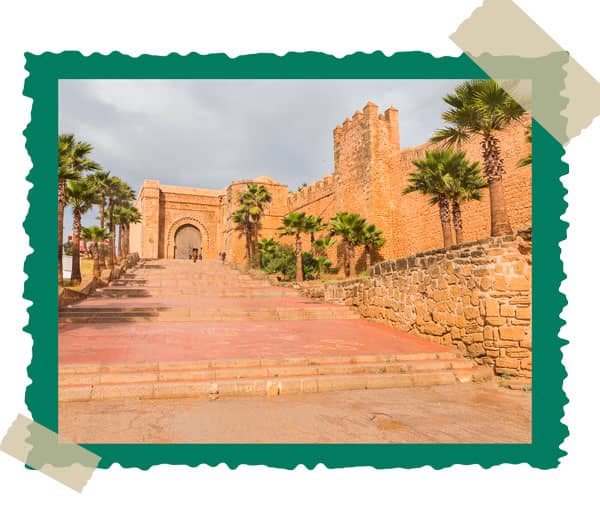
Vernacular Architecture and Rural Structures
While Morocco’s grand mosques and palaces often steal the spotlight, its rural and vernacular architecture is equally significant. Rooted in local materials, climate-conscious design, and community needs, these structures reflect the ingenuity and adaptability of Moroccan builders across generations. Whether in the High Atlas Mountains or the edge of the Sahara, these traditional forms blend seamlessly with their environments.
1. Kasbahs and Ksour
Kasbahs are fortified homes or citadels, typically built by powerful families or local leaders. They served as both defensive structures and residences, often built with thick, high walls and corner towers.
Ksour (plural of ksar) are fortified villages that protected entire communities.
Aït Benhaddou
Perhaps the most famous ksar in Morocco, this UNESCO World Heritage Site near Ouarzazate is a stunning example of earthen architecture. Made from clay bricks (pisé) and crowned with crenellated towers, Aït Benhaddou has appeared in many films like Gladiator and Game of Thrones. It demonstrates how architecture can be both practical and picturesque.
These structures were designed to be cool in the harsh desert heat and to provide communal security, often including granaries, mosques, and living quarters within one complex.
These religious and royal structures are more than just monuments they’re living expressions of Morocco’s devotion, craftsmanship, and regal legacy. Each tells a story of dynasties, spiritual devotion, and architectural excellence that continues to influence Moroccan design to this day.
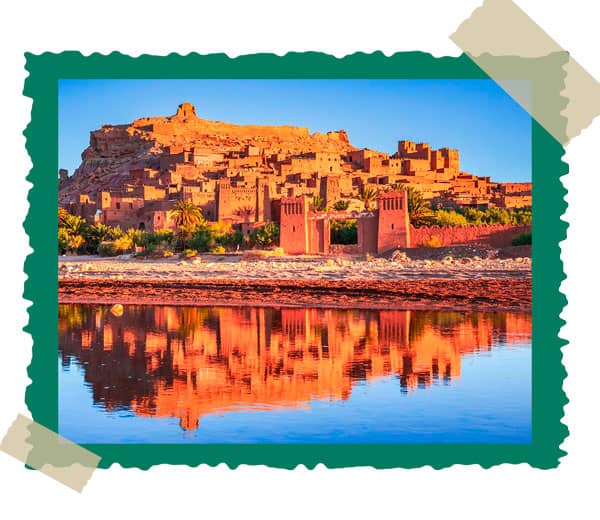
2. Berber Mountain Dwellings
In the High Atlas and Rif Mountains, Berber (Amazigh) communities have developed a distinctive architectural style:
- Flat-roofed stone or adobe houses built into the mountainside
- Small windows and thick walls to protect against cold winters and hot summers
- Homes clustered together, often around a communal threshing floor or spring
Villages like Imlil, Tizi Oussem, or Tighza are excellent examples, where traditional building methods harmonize with the rugged terrain. The simplicity of these structures contrasts with urban opulence but speaks volumes about sustainability and resilience.
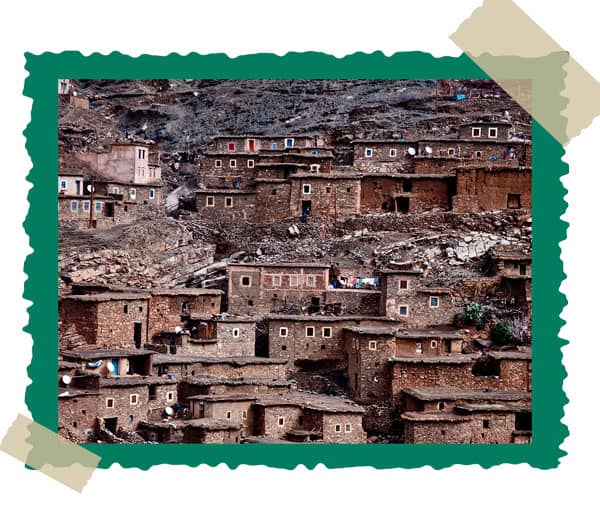
3. Oases and Traditional Villages
In the southern desert regions, architecture is shaped by scarce water, intense sun, and community-centered living.
- Earthen homes in places like Skoura, Tamegroute, or Zagora are often built within palm groves, using mudbrick that retains coolness
- Underground irrigation systems (khettaras) demonstrate engineering adapted to the arid environment
- Villages are designed compactly for defense and to reduce sun exposure, with narrow shaded paths
Many of these villages include communal granaries (agadir) and religious zawiyah (shrines or spiritual schools), making them cultural as well as residential spaces.
In every region, Morocco’s vernacular architecture showcases a remarkable synergy between people, place, and tradition. These humble yet durable structures are not just homes, they’re a way of life, reflecting the rhythms of nature and the strength of community bonds.
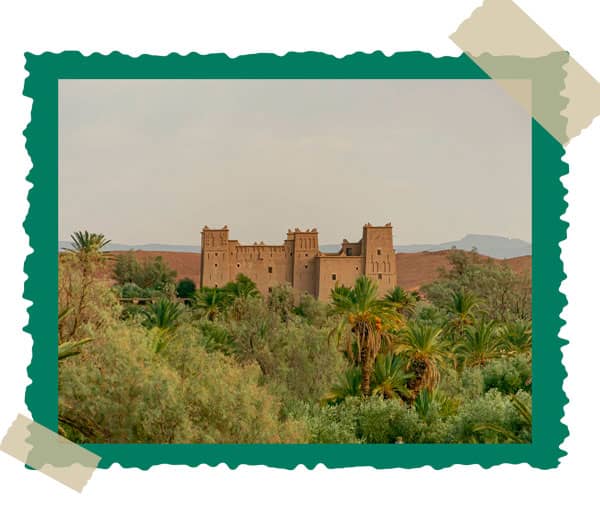
Fascinated by Morocco’s Unique Architectural Beauty?
From the intricate tilework of centuries-old medinas to the sleek lines of contemporary design, Moroccan architecture is a journey through time, tradition, and innovation. Whether you’re an architecture enthusiast, a history lover, or simply someone inspired by cultural beauty, Morocco offers a visual experience unlike any other.
Ready to explore the walls that tell stories?
Colonial and European Influences
The early 20th century brought significant changes to Moroccan architecture, particularly during the French and Spanish protectorates (1912–1956). These colonial powers introduced European planning principles, materials, and aesthetics often blending them with traditional Moroccan styles. The result is a unique architectural fusion that can still be seen in cities across the country today.
1. The French Influence
Under French colonial rule, many Moroccan cities were divided into two parts: the old medina and the newly constructed “ville nouvelle” (new city). These new districts reflected French urban planning ideals, wide boulevards, plazas, and formal building layouts but often incorporated local motifs.
Casablanca
Casablanca was the main focus of French modernization and remains the best example of colonial-era architecture in Morocco.
- Art Deco and Neo-Moorish buildings line streets like Boulevard Mohammed V
- Notable landmarks include the Mahkama du Pacha, a blend of Hispano-Moorish and French civic architecture with tiled courtyards and carved wood ceilings
- Residential blocks often feature wrought iron balconies, geometric stucco work, and traditional mashrabiya screens
French architects like Henri Prost played a key role in designing urban master plans that integrated European order with Moroccan style.
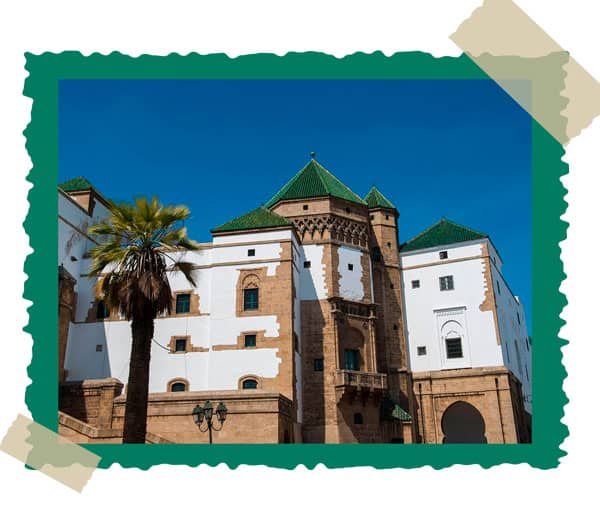
2. The Spanish Influence
In northern Morocco particularly in Tetouan, Ceuta, and Melilla the Spanish left a significant architectural footprint. Buildings here often showcase Andalusian-Moorish elements, such as whitewashed walls, tiled facades, and ironwork balconies.
Tetouan
Tetouan’s medina is an outstanding example of a Spanish-influenced urban center:
- Homes feature interior patios with fountains, decorative arches, and painted ceilings
- The Spanish Quarter (Ensanche) has neoclassical buildings and public institutions with a colonial flair
- The blend of Andalusian tradition with Moorish artistry earned Tetouan a place on UNESCO’s World Heritage List
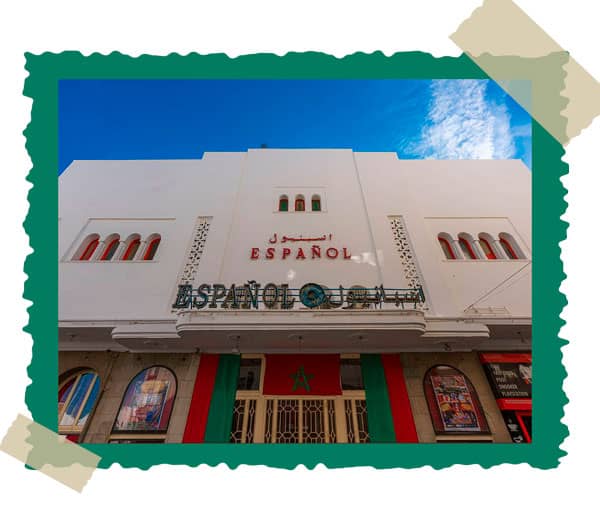
3. Architectural Fusion
One of the most fascinating outcomes of the colonial period was the hybrid architectural style it produced. Buildings often merged French or Spanish structure with Moroccan details, such as:
- Arched doorways framed by zellige tiles
- Flat European-style roofs combined with traditional courtyards
- Public buildings like post offices, banks, and train stations designed to reflect Moroccan identity while meeting European standards
This period also introduced new materials and construction techniques, such as reinforced concrete and steel, which allowed for new forms and scales in design, a turning point that influenced modern Moroccan architecture.
While the colonial legacy is complex, its architectural contributions added a rich new layer to Morocco’s built environment. Today, these buildings serve as cultural and historical bridges, connecting the country’s past with its evolving urban identity.
Contemporary Moroccan Architecture and Innovation
As Morocco strides into the 21st century, its architecture is evolving to meet modern needs while honoring cultural heritage. Today’s Moroccan architects are blending tradition with innovation using advanced materials, sustainable technologies, and global influences to redefine skylines across the country. From eco-resorts in the desert to state-of-the-art museums in cities, Morocco’s modern architecture reflects ambition, creativity, and respect for the past.
1. Modern Public and Cultural Buildings
New institutions and urban developments in Morocco are pushing architectural boundaries while maintaining a Moroccan soul.
Mohammed VI Museum of Modern and Contemporary Art (Rabat)
This museum is a striking example of modern design rooted in Moroccan identity. It features:
- A sleek, contemporary exterior with white stone and clean lines
- Traditional zellige patterns subtly integrated into its facade
- Spacious interior galleries designed for natural light and fluid movement
It symbolizes Morocco’s cultural renaissance and commitment to preserving and showcasing art in a modern context.
Grand Théâtre de Rabat
Designed by world-renowned architect Zaha Hadid, this futuristic performance venue along the Bou Regreg River is set to be one of Africa’s largest cultural institutions. Its flowing, wave-like structure evokes motion and fluidity, inspired by the nearby river and Arabic calligraphy.
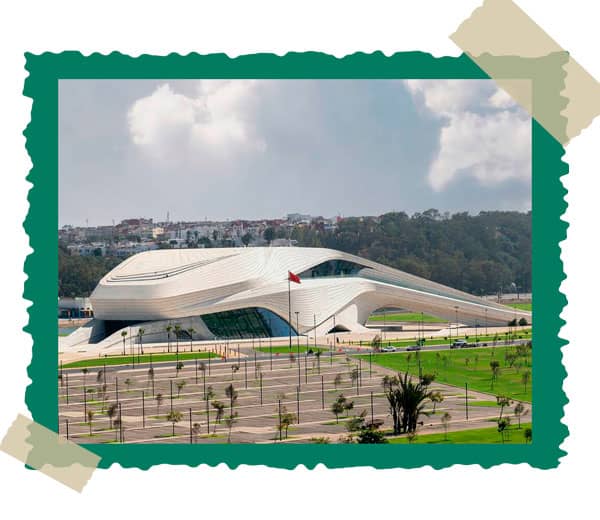
2. Eco-Friendly and Sustainable Design
With growing awareness of climate and environmental challenges, Moroccan architecture is increasingly turning toward green building practices.
- Earth-based construction techniques, like rammed earth and adobe, are being revisited for energy efficiency and low carbon impact
- Eco-lodges in the Agafay Desert or Atlas Mountains incorporate solar power, greywater recycling, and local materials
- Projects like Green Mosques (initiated by the Moroccan government) promote energy-efficient lighting, water-saving ablutions, and thermal insulation
These efforts are creating a model for sustainable architecture rooted in local tradition and environmental stewardship.
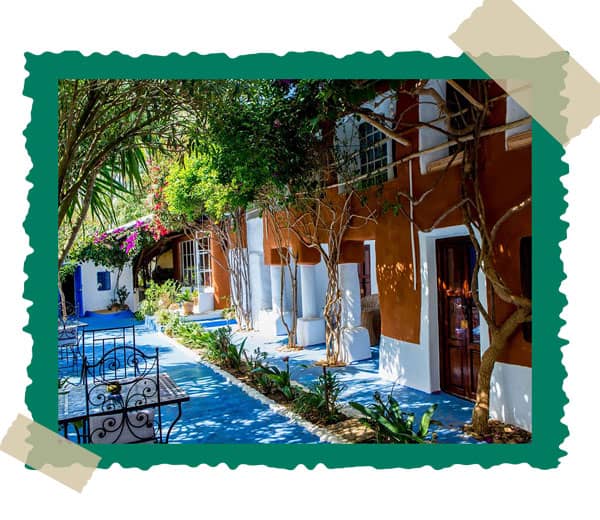
3. Contemporary Residential and Urban Projects
Modern Moroccan homes and neighborhoods are reinterpreting traditional layouts with modern comforts.
- Luxury riads now combine traditional features (like inner courtyards and decorative tiles) with minimalist decor and smart home technology
- New urban developments in cities like Casablanca, Rabat, and Tangier feature open-plan apartments, communal green spaces, and underground parking all while referencing Moroccan arches, colors, and patterns
- Moroccan interior design is increasingly popular globally, with elements like tadelakt walls, lanterns, and geometric tiles appearing in homes around the world
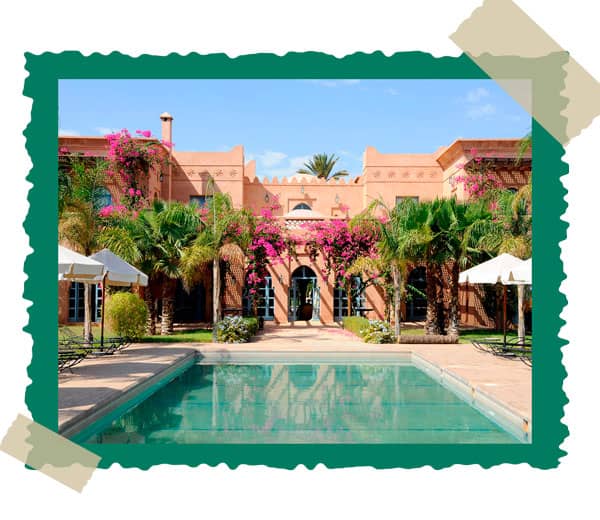
4. Influential Contemporary Architects
Several Moroccan architects are gaining international attention for their innovative work:
- Aziza Chaouni – Known for projects like the restoration of the Al-Qarawiyyin Library and sustainable urban planning
- Tarik Oualalou – Co-designer of the Morocco Pavilion at Expo 2020 Dubai, which integrated rammed earth walls with futuristic forms
- Rachid Andaloussi – A key figure in designing major civic projects like train stations and administrative complexes
These architects are shaping a new Moroccan architectural language, one that is grounded in heritage but open to the world.
Contemporary Moroccan architecture is not about abandoning the past, but rather building upon it with innovation, elegance, and purpose. As cities expand and new challenges arise, Morocco continues to prove that modern architecture can be sustainable, meaningful, and deeply rooted in cultural identity.
Conclusion
Moroccan architecture is a vivid journey through time from the winding alleys of ancient medinas and majestic royal palaces to the earthy mountain dwellings and bold modern landmarks. Each structure tells a story, shaped by geography, religion, culture, and innovation. Whether you’re exploring a centuries-old kasbah or admiring a sleek contemporary museum, you’ll find that Morocco’s architecture is not just about buildings, it’s a living expression of identity, tradition, and vision. For any traveler, architect, or cultural enthusiast, Morocco offers a truly inspiring architectural landscape that bridges the past and the future with remarkable grace.
